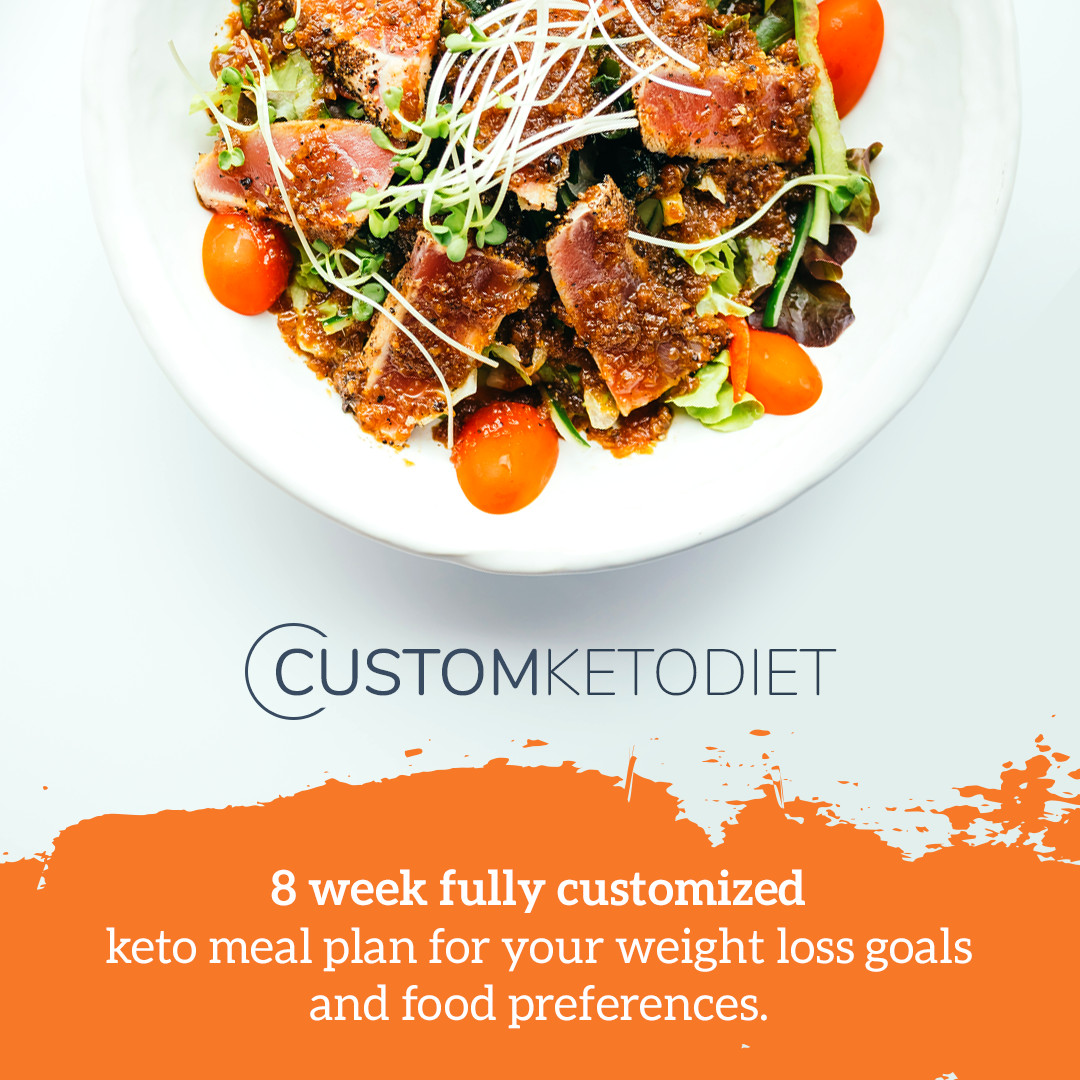Keto Diet: What is a Ketogenic Diet?
Keto
is everywhere; it's the new buzzword, the new favorite among those looking to
shed pounds, and the new hate victim of the
food-pyramid-spouting-eat-your-whole grains mainstream medical industry. The
keto diet, while it is not the magic cure-all for every single disease on the
planet, does a pretty dang good job at being the potential causer of healing many horrible conditions. So let's cut
through the science, separate fact from fiction, and look at the
Keto
Diet Benefits
Recently,
the keto diet has become extremely popular for its health benefits such as
weight loss and preventing disease. The keto diet can be hugely beneficial, but
how does it work to provide these benefits?
What
is the Keto Diet?
You
may have heard of the high-protein, low-carbohydrate Atkins diet. The keto diet
keeps carbohydrate levels low, but instead of ramping up the amount of protein
in your diet, the keto diet increases the amount of fat. A typical keto diet
aims for meals with 75% fat, 20% protein, and 5% carbohydrate. Eating a
high-fat diet can still mean eating healthy. Keto diet menu items often include
seafood, meat, dairy products, eggs, vegetables, and nuts. With the increased
popularity of the keto diet, keto recipes are widely available.
How
Does the Keto Diet Work?
It
might seem counterintuitive that adding more fat to your diet can lead to
weight loss. Normally, your diet is high in carbohydrates, which are broken
down into glucose, or blood sugar, for use as energy. As glucose enters your
bloodstream, your body releases insulin to store excess glucose as fat. The
more carbohydrates, the more glucose. The more glucose, the more insulin, and
the more insulin, the more fat.
The
keto diet takes advantage of the fact that when your meals are high-fat and
low-carbohydrate, there is no insulin spike, and you don't add to your fat
reserves. Instead, fat from diet and stored fat are broken down to ketones
("keto" is short for "ketogenic" producing ketones). Like
glucose, ketones can be used for energy, keeping your body running without
increasing blood sugar or putting on excess fat. The benefits of the keto diet
can be huge.
The Benefits of Keto Diet
Benefit #1: Weight Loss
Okay,
so this one isn't so astounding, but it is one of the most common reasons
people embark on the keto diet. So why is weight loss usually so easy on the
ketogenic diet instead of other regular diets? For all of the following
reasons:
• The keto diet is composed of approximately
75% fat, 20 % protein, and 5% or less carbohydrates. The high fat content and
lack of sugar means diminished cravings, lack of blood sugar swings and binges,
and increased satiation. Increased satiation=eating less. Many people also have
food sensitivities to grains, even gluten-free ones, so eliminating them may
lead to an increased ability to absorb minerals like magnesium and potassium,
which in turn means your body is more nourished and you have fewer cravings
• Ketones. When your blood sugar is running
low, your body turns to its glycogen stores for energy. Typically glycogen
stores house about 2000 calories of "backup" energy for when you run
out of glucose. Like the intelligent machine it is, your body depletes the glycogen
stores and then turns to your own body fat for fuel.
IMPORTANT: The
ketogenic diet is not a free-for-all
eat however much cheese or super low-carb fat bomb treats you want diet. If you
are eating way more calories than you need, you will not lose weight. So focus
on keeping your diet around fatty cuts of grass-fed meat, butter, eggs,
avocados, lots of green veggies and cruciferous, and be modest with the keto
desserts, dairy, and sweets.
Benefit #2:Mental Performance
The
ketones produced from a low carb diet are a much more efficient source of
energy than glucose. Studies have indicated that they can improve
cognitive impairment and even help with diseases such as Alzheimer's
and Parkinson's. The high-fat diet helps to support the balance of essential
omega 3s and omega 6s which are vital for optimal brain function. Additionally,
ketosis is able to boost mitochondria production and adenosine
triphosphate within the brain's memory cells, thereby improving mental
performance and clarity.
Benefit #3:Reduced risk of Chronic Disease
A
ketogenic diet can boost the body's defense against a variety of conditions. By
reducing inflammation, and improving mitochondrial function, it can help to
mitigate the risk of developing several chronic diseases. Cancer cells
typically possess abnormal mitochondria, which need an increased supply of
glycogen. Ketosis allows for normal cells to be fed while starving the cancer
cells, as they are unable to utilize the ketones for energy because
of their dysfunctional mitochondria.
Benefit #4:Improved Blood Pressure
High
blood pressure significantly increases the risk of several diseases and is a
leading cause of deaths worldwide. A low-carb diet has been
proven to be more effective than a low-fat diet in reducing blood
pressure. In fact, some claim that it is just as effective as taking
pills. This combined with the weight loss derived from a ketogenic diet, is
sure to vastly improve cardiovascular health and function.
It
has been proven by numerous studies in the realm of nutrition science, that
this form of dieting can have a very positive impact on your overall health and
bodily function. As long as you can find a way to maintain the discipline, the
rewards are abundant. For those that have not been able to gain many results
from traditional methods, the keto approach is definitely something
worth considering.

Benefit #5:Reduced Blood Sugar and Insulin
Since
carbohydrate intake is limited, blood sugar and insulin levels are lowered. This
is particularly important for people with type 2 diabetes, which causes a
buildup of glucose in the bloodstream. The keto diet can be used to reduce or
eliminate the need for diabetic insulin injections.
Benefit #6:Reduced Triglycerides
Fat
subunit molecules called triglycerides normally circulate in your bloodstream.
High levels of triglycerides are a significant risk factor in the development
of heart disease. In the keto diet, because fat is being burned for energy, the
number of triglyceride molecules in the bloodstream decreases, reducing the
risk of heart disease.
Benefit #7:Improved Cholesterol
"Bad"
(LDL) cholesterol is another risk factor for heart disease. Too much bad
cholesterol in your bloodstream builds up in your arteries, narrowing them and
causing atherosclerosis, a type of heart disease. The keto diet reduces bad
cholesterol levels while increasing the level of "good" (HDL)
cholesterol in your body.
Benefit #8:Brain Function
A
poorly functioning brain, as you may have already experienced, leads to
lessened work productivity, which in turn means an unhappy boss, lack of job
satisfaction, sugar cravings for energy, and depression. It's a horrible domino
effect. The original ketogenic diet was formulated by Dr. Russell Wilder in the
early 20th century to treat epilepsy. The success rate was phenomenal and it is
still used today to treat epilepsy and other brain disorders. Research also
indicates that ketones are more efficient brain fuel than glucose. (Source: https://www.ncbi.nlm.nih.gov/pmc/articles/PMC5102124/)
Benefit #9:Potential Cancer Benefits
One
study showed implementing the ketogenic diet led to a dramatically increased
survival time and slower tumor growth. (Source: https://www.ncbi.nlm.nih.gov/pmc/articles/PMC5450454/)
Summary
The
keto diet provides many health benefits. This diet can not only help you
quickly lose weight, but can also improve your overall health and help prevent
disease.
Conclusion
If
you're reading this article now, chances are you are in some sort of pain,
whether physical and/or mental (being overweight, struggling with autoimmune
disorders, thyroid disease, fatigue, brain fog) and want to change. Use this information, don't just
skim through it and store it in the back of your brain and say "that's nice
for some people", motivate yourself to change.
References:
medium.com/@gschmaus/the-ketogenic-diet-and-chronic-disease-3695b2275edd
healthline.com/nutrition/10-benefits-of-low-carb-ketogenic-diets#section7
drjockers.com/benefits-ketogenic-diet/medicalnewstoday.com/articles/319196.php




























